Instead of putting off our trip to Hidalgo, Roberto and I decided to venture there the following weekend. We took a short bus ride to the city of Pachuca, which is the capital of Hidalgo state. From there we rode in a little van to a pueblo called Huasca de Ocampo. Finally, we took a taxi to the Prismas Basálticos. You can tell that this place is pretty amazing just by looking at the pictures.
It was a beautiful sunny day, and the heat picked up really fast. Roberto stopped for a refreshing drink of tehuacán (mineral water), lime, and salt. We also stopped to take lots of pictures and to do some rock climbing.
The Prismas Basálticos are geometric basalt columns that adorn the walls of the Santa María Regla Ravine. The columns, which are approximately 100 feet high, were formed by the rapid cooling of lava during a spill millions of years ago. There are four waterfalls that splash down the hexagonal stones, and they serve as the source of water for the Santa María Regla reservoir.
There were many fantastic views of the waterfalls from various angles, but I think my favorite view was from the rope bridge that stretched across the deep ravine. I must admit that I was scared out of mind to walk across this bridge, as it was kind of rickety. I had visions of Indiana Jones movies in head—the bridge breaking and trying to hang on for dear life. Luckily, I was spared that drama and opted for some silly photos instead.
After spending the morning at the Prismas Basálticos, we went to a place called Peña del Aire in the afternoon. Literally meaning “Rock in the Air,” Peña del Aire is this giant rock formation that is balanced on a stone ledge which hangs over into a giant ravine. Please note the people eating lunch in the Zona de Peligro (Danger Zone). Apparently they don’t know how to read.
But what is even more impressive is the view of the valley below. There is a little river that winds through the rolling green mountains, and there is a certain sense of peace and tranquility about this place. I was told that there is a scene in the Legend of Zorro which was filmed in this sprawling valley. So, be on the lookout for it.
On our way back to Pachuca, we stopped in a little mining town called Real del Monte (AKA Mineral del Monte). The town was known for its abundance of gold and silver before the Spanish conquest and continued to hold this title through the 1800s. A large Cornish population settled here in the early 1800s, and their influence is still noticeable today. From the pastes (flaky butter pastries filled with meat) to the love of soccer (introduced by Cornish miners in the late 1800s), this town still keeps its charm. Roberto and I took a short tour on a double decker bus. It was definitely cool, but you have to watch out for those low-hanging electrical wires and pine branches! We also stopped to pose as Cornish miners on the top of the mountain. What do you think?
On Saturday evening, we headed to Tula de Allende on a very bumpy bus ride. Tula was the probable capital of the Toltec civilization and is known for its 14.5 foot stone warriors. This desert-like location where the stone pyramids stand was once a place of splendor. Legends talk of palaces of gold, turquoise, jade, and quetzal feathers. Many believe that the many treasures were later looted by the Aztecs.
The four stone warriors on top of the pyramid and the four columns behind them once supported a roof. The stone statues are adorned with carved headdresses, skirts, and breastplates. They hold spears in their right hands and knives and pouches in their left hands. The stone warrior that is situated furthest to the left is a replica of the original, which is now located in the Museo de Antropología.
While this archaeological site is very large, it was only recently discovered in 1940 by Jorge Acosta.
There were 10 chac mool statues (rain god) found around this site, but only one still has its head. I decided to stop for a second to be chac-cole :-). We also ventured into the museum to see the complete chac mool with head and all. If you notice, chac mool appears to be holding a platter on his stomach. This is where the sacrificial item was placed (usually a heart). Finally, there is a great short story about chac mool by Carlos Fuentes. You should definitely check it out!
Click for more pictures!
Abrazos, Nicole
May 2, 2010
Subscribe to:
Post Comments (Atom)

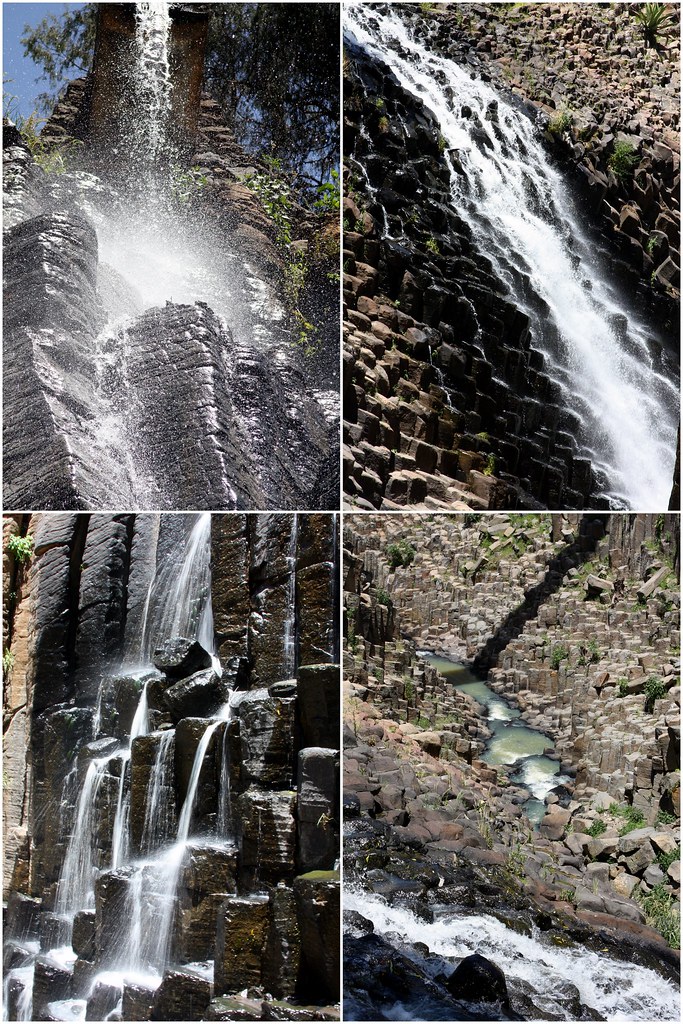
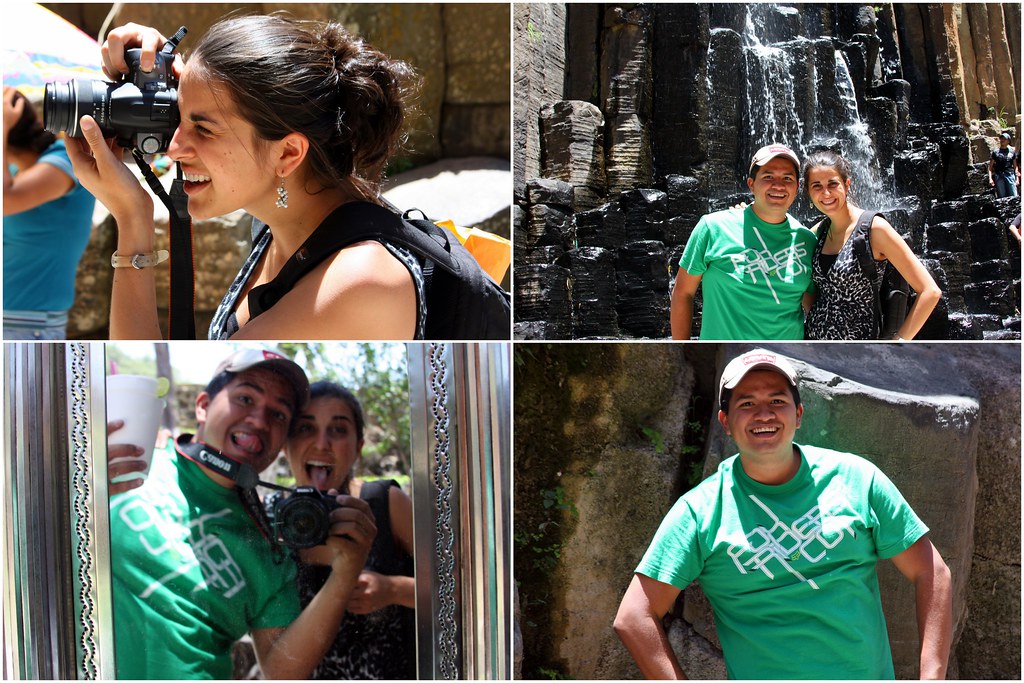
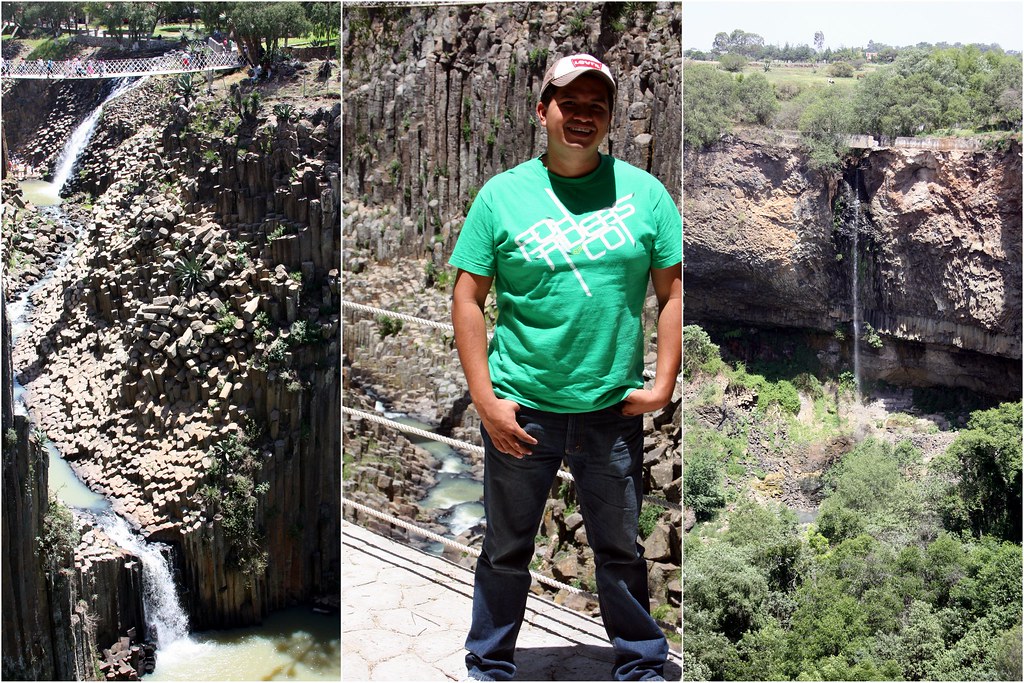
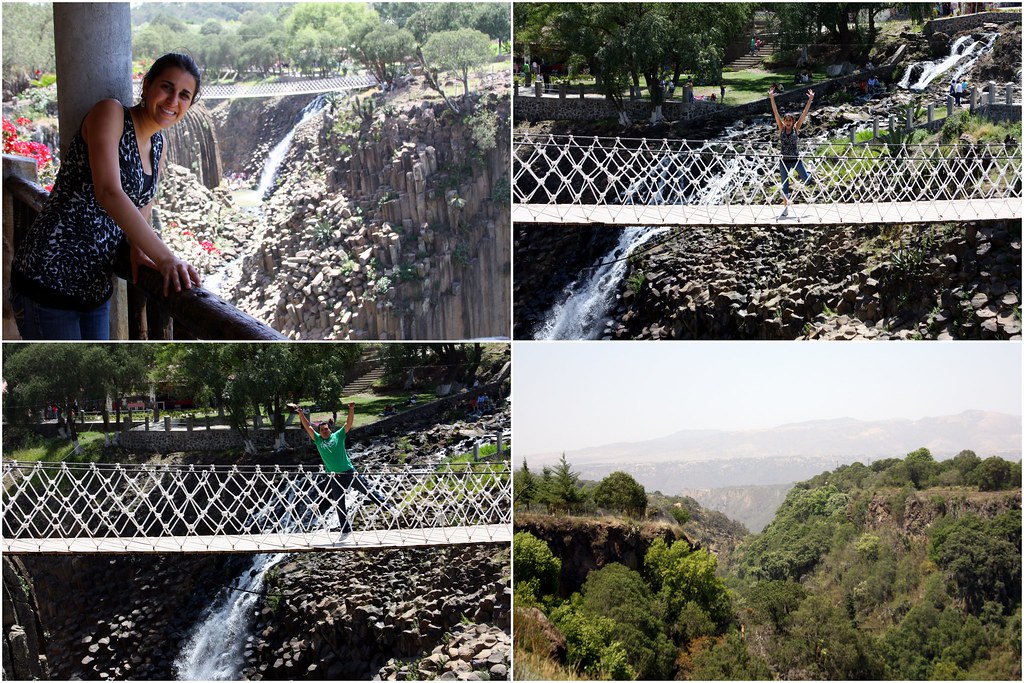


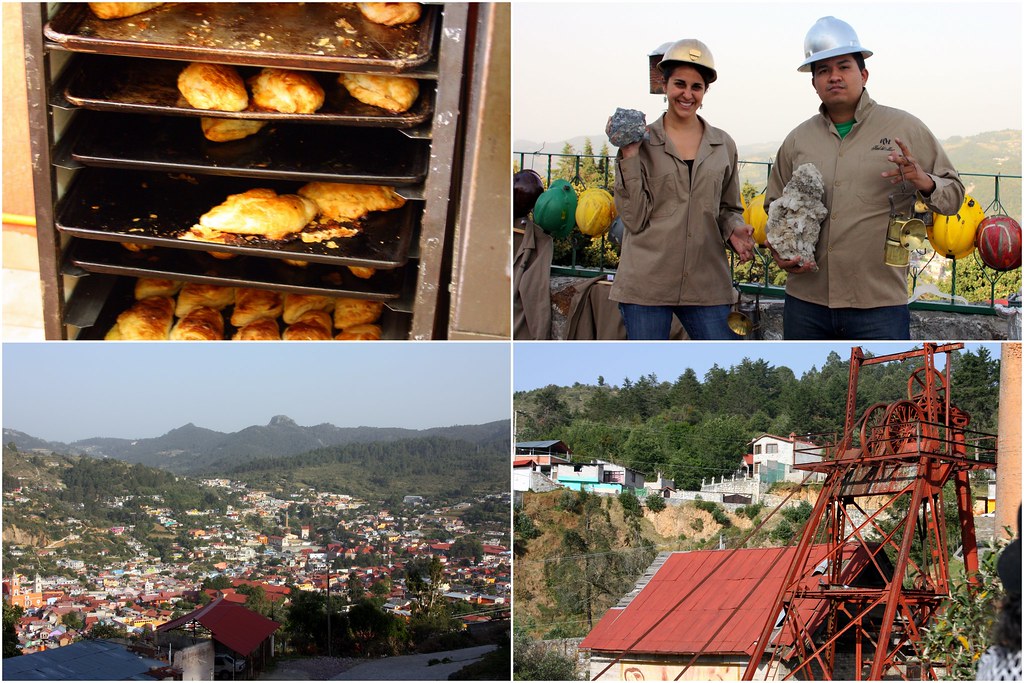

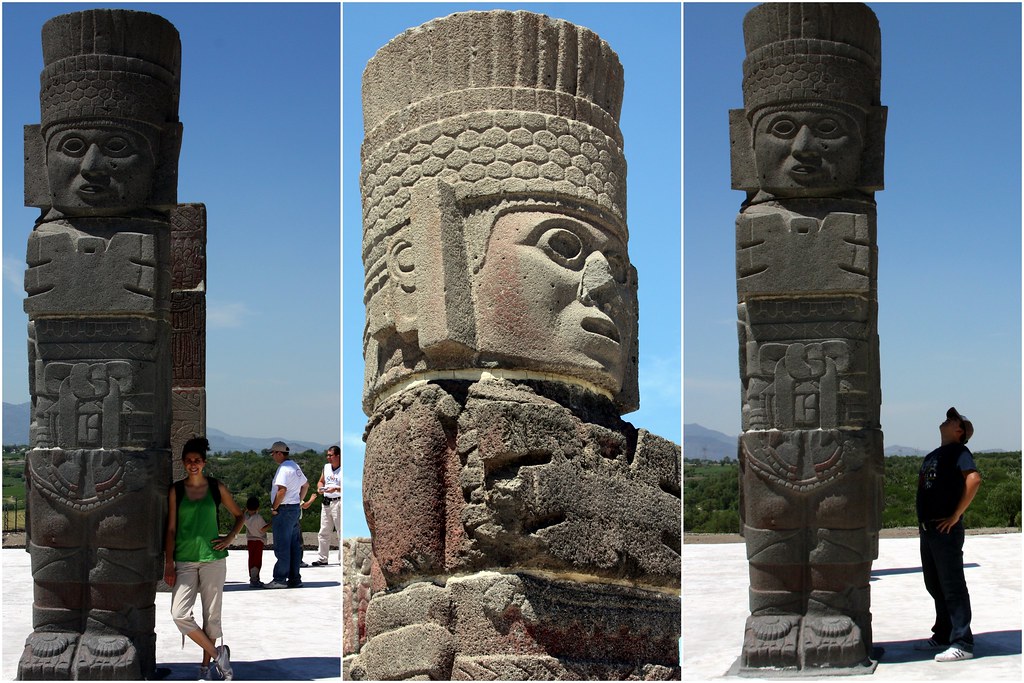

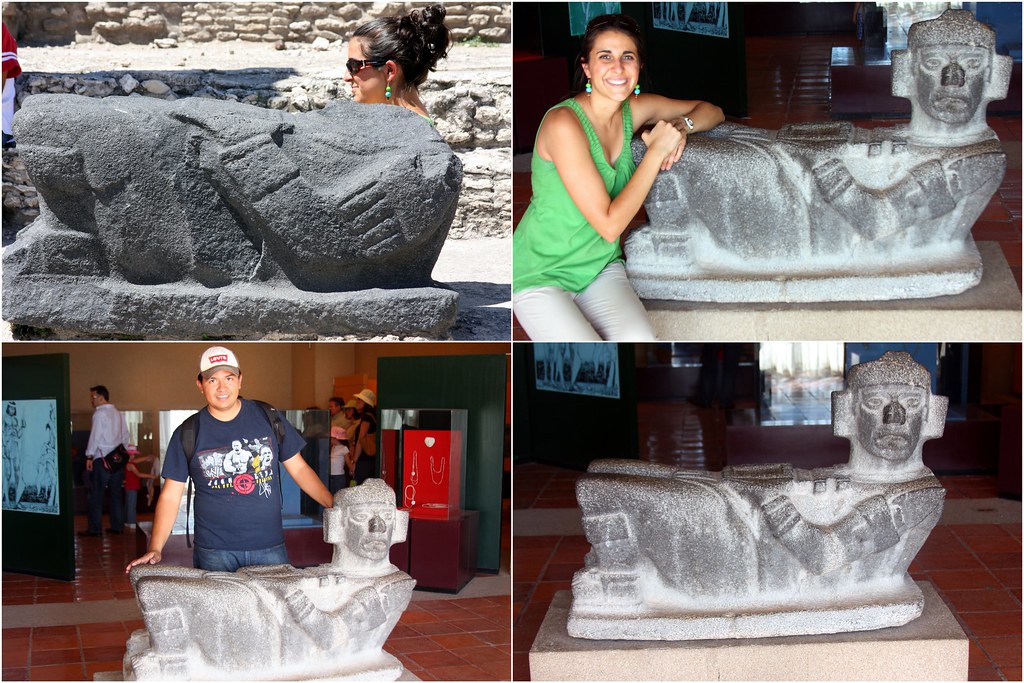


0 comments:
Post a Comment